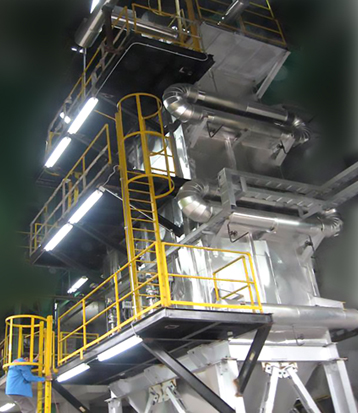
Waste Heat Recovery
Industrial Waste Heat Recovery Systems
What Is the Inflation Reduction Act?
The Inflation Reduction Act offers individuals a tax credit of up to 40% of the cost of waste heat recovery projects. This initiative targets a new market and customer base without an established vendor supply chain. Additionally, the act includes a provision for retrofitting existing products that have already been sold and implementing waste heat into power generation on a larger scale.
Waste heat is heat that has been generated in a process by fuel combustion or a chemical reaction, and then been “dumped” into the environment even though it could still be reused for some useful and economic purpose.
The essential quality of heat is not the amount but rather its “value”. The strategy of how to recover this heat depends in part on the temperature of the waste heat gases and the economics involved.
Large quantity of hot flue gases is generated from boilers, kilns, ovens and furnaces. If some of this waste heat could be recovered, a considerable amount of primary fuel could be saved. The energy lost in waste gases cannot be fully recovered. However, much of the heat could be recovered and loss minimized by adopting Waste Heat Recovery Measures (WHR).
While considering the various potentials for heat recovery, it is useful to note all possibilities and then grade the waste heat in terms of potential value. There are many sources such as heat in flue gases; heat in vapour streams; convective and radiant heat that is lost from exterior of equipment; heat losses from cooling water; and losses while providing chilled water, or for that matter in the disposal of chilled water; also in heat stored in products that leave the process; and finally heat in gaseous and liquid effluents leaving the process. There are basic three categories of heat recovery namely High Temperature Heat Recovery, Medium Temperature Heat Recovery & Low Temperature Heat Recovery, most common is Medium Temperature Heat Recovery. We need to study your plant in detail in which category it falls and what potential is available.






